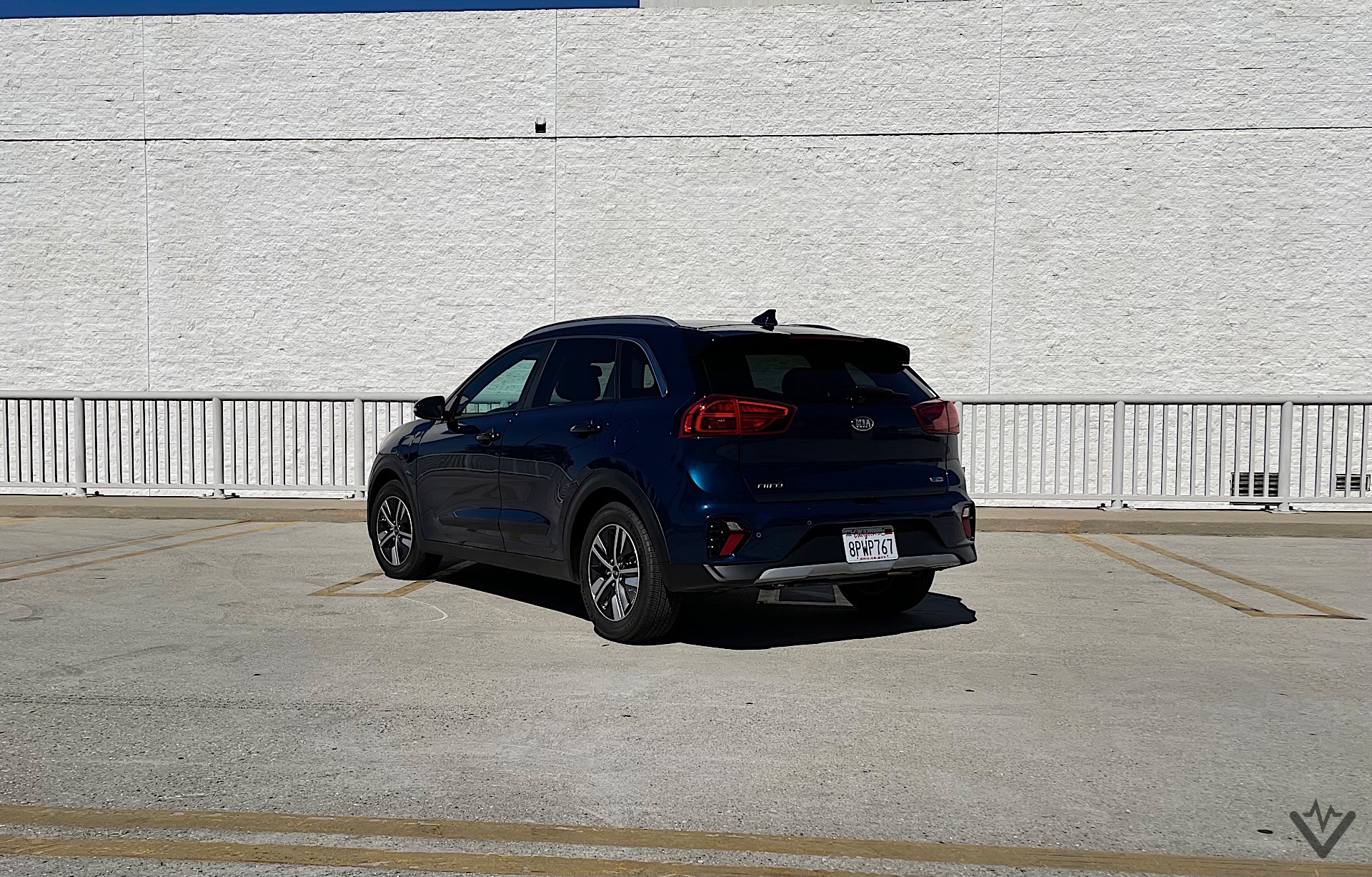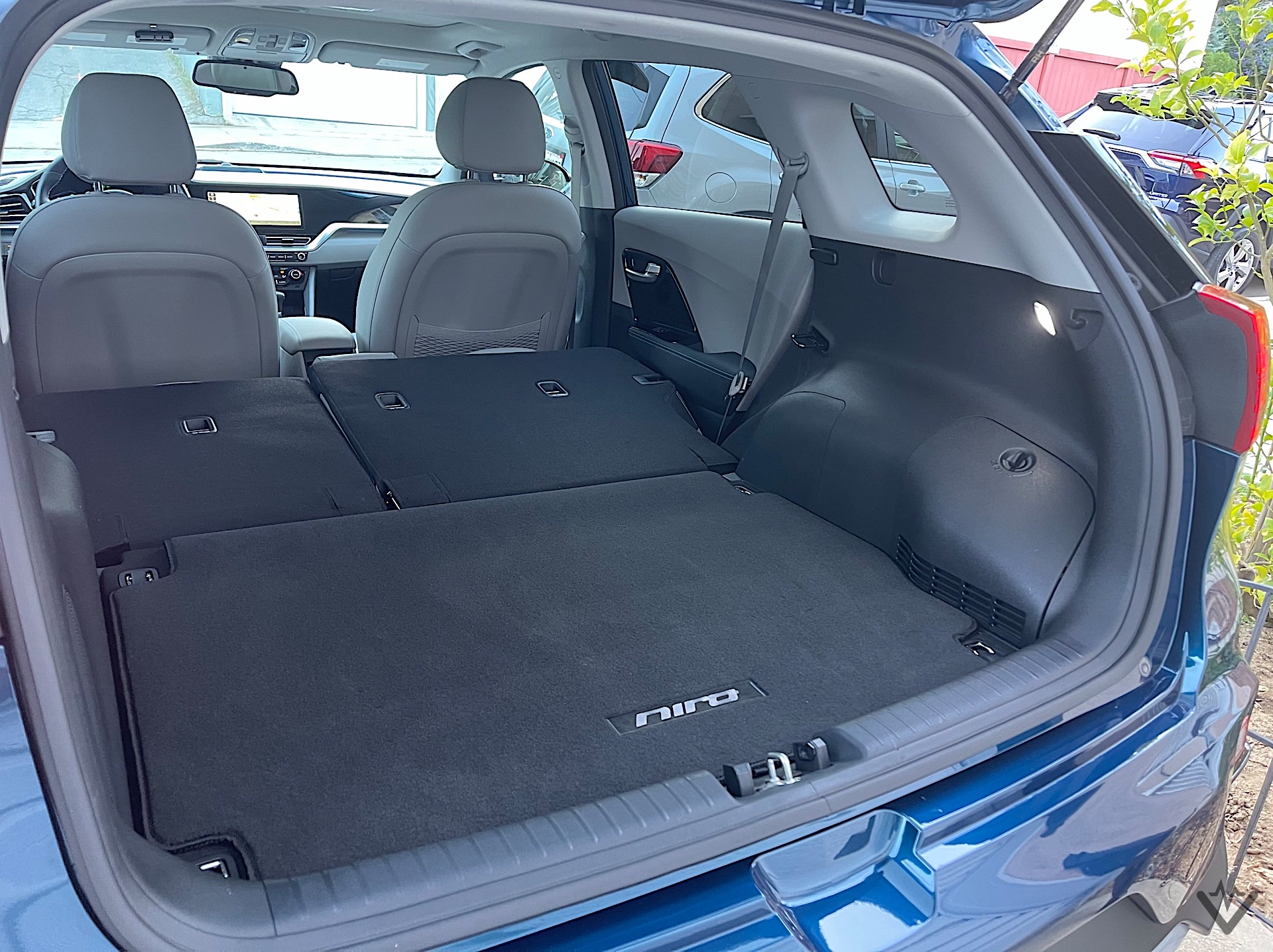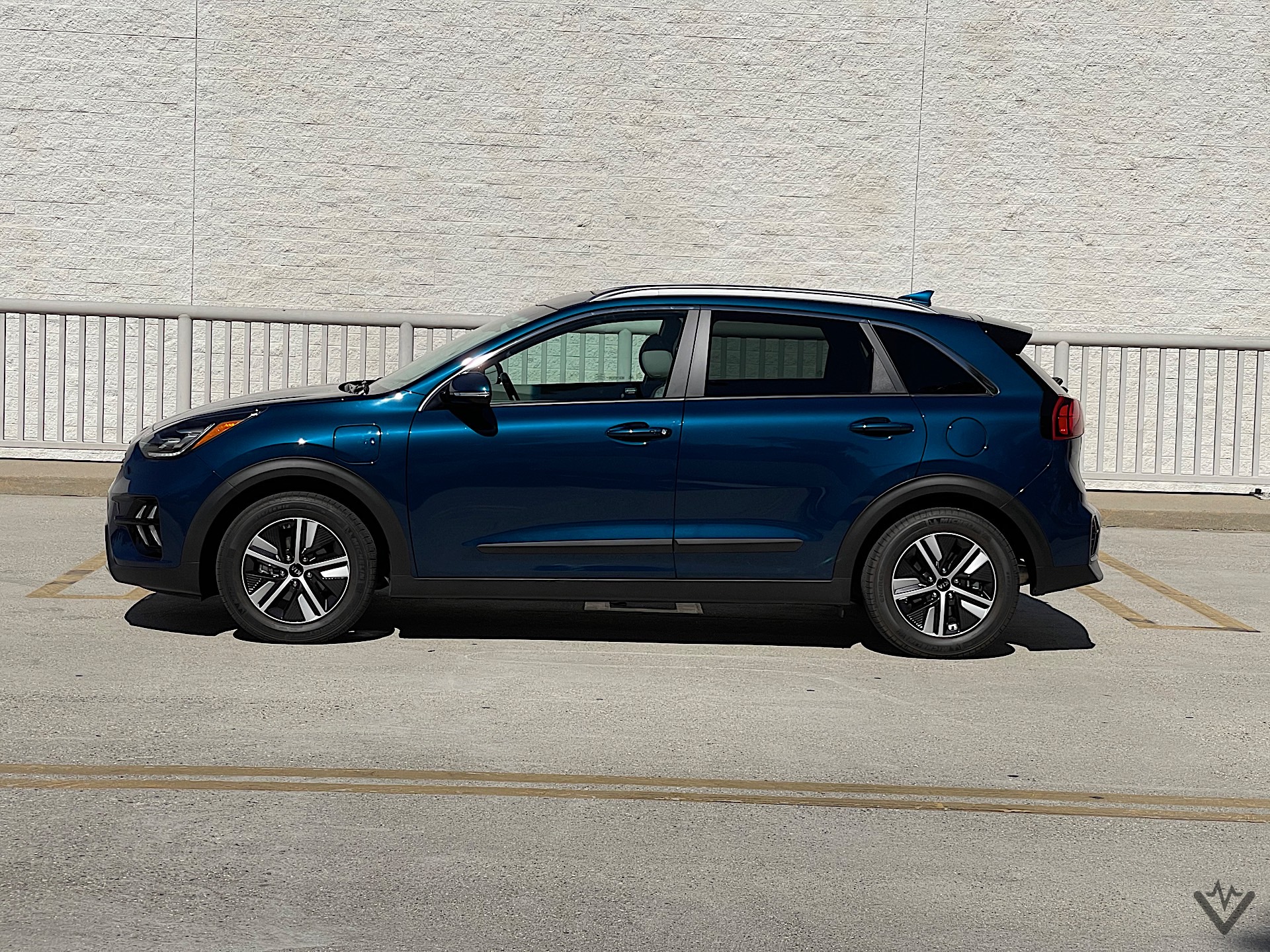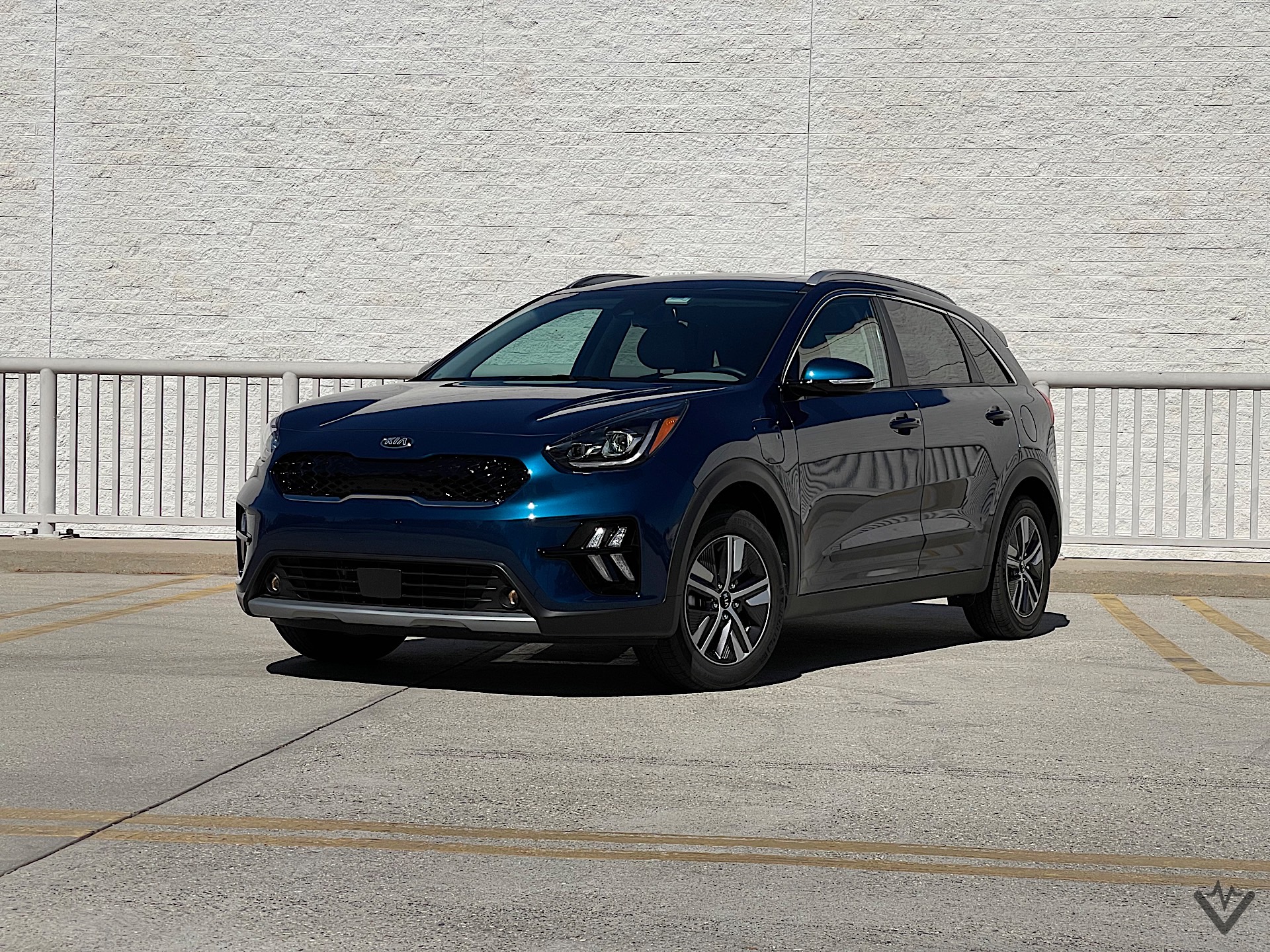The nice thing about the Kia Niro is that there’s a variant to fit every requirement. Are you all-in on electrification? There’s the EV. Looking for an efficient daily commuter that’s compact yet spacious? Get the standard Niro Hybrid. Do you want the EV experience but need something that lets you travel long distances? Check out the 2021 Kia Niro PHEV. This splits the difference between the EV and conventional hybrid, giving you aspects of both.
How does it act as a bridge toward full electrification? Let’s take a look at the differences between the standard and plug-in hybrid Niro models. The 2021 Niro PHEV carries over with minor packaging updates.
2021 Kia Niro PHEV differences

There are only several cues that differentiate the Niro PHEV from the standard hybrid. The biggest ones are the charging port on the driver’s side front fender and the eco plug-in badge on the tailgate. Inside, you’ll find another eco plug-in badge on the dash. Another notable difference between the Niro PHEV and its self-charging counterpart is that the former is available with a memory function for the driver’s seat. You also get a charge level indicator on the gauge cluster and top of the dash. There is no spare tire due to the battery now taking up space under the cargo area.
2021 Kia Niro PHEV similarities

The best part about the Niro PHEV is that it retains a high level of practicality and comfort. You have spacious seating for four and a large cargo area even with all seats up. Folding the 60/40 split-folding rear seat backs gives you a squared-off load space. Fit and finish are equally solid thanks to lots of soft materials and lots of padding where your arms would fall. Even the harder bits are reassuringly tactile.
On the tech front, the Niro PHEV retains Kia’s excellent multimedia system, which is one of the easiest to use. Our test car had the optional 10.25-inch touch screen, which is snappy, responsive, and easily customizable. The optional Harman Kardon audio system offers a crisp listening experience and evenly immerses the cabin despite not being a surround sound unit.
As with the standard Niro, the plug-in utilizes an older version of Kia’s DriveWise suite of active safety features. Regardless, it works well and does its job without becoming annoying. Lane-keeping assist subtly steers you back into your lane if you accidentally drift around. Adaptive cruise control works smoothly, too, acceleration and braking smoothly in traffic. Distancing is also nicely calibrated, leaving roughly a car length between you and the vehicle ahead in its closest setting.
2021 Kia Niro PHEV driving impressions

The biggest difference between the Niro PHEV versus the standard car lies under the skin. A 60-hp electric motor and an 8.8-kWh lithium-ion battery replace the 43-hp unit and 1.56-kWh battery. The 1.6-liter I4 and six-speed dual-clutch automatic transmission remain. Despite the bigger battery and more powerful electric motor, the Niro PHEV’s combined output stands at 139 hp and 195 lb-ft of torque. Charging the battery from 0 to 100 percent takes around 2.5 hours using a level 2/240-volt charger. You can also use a standard household plug but that increases charging time to nearly five hours.
Once behind the wheel, you’ll immediately notice that the Niro PHEV stays in EV mode longer. With an EPA-estimated 26 miles of all-electric range, you can cover most of your commute or run errands without using fuel. The car’s penchant for EV mode, however, means you’ll hear road noise more clearly with the engine not running as often.
The ability to select between automatic, hybrid, and EV modes allows you to choose when to go emissions-free, adding extra flexibility. As with the majority of hybrids and PHEVs using a pancake setup, you feel shifts in EV mode because the electric motor’s power goes through the transmission before getting to the wheels.
Thanks to the powertrain’s generous torque, the Niro PHEV doesn’t sound winded even when passing or climbing hills. The transmission works smoothly in most situations and provides quick shifts. At low speeds, it can get slightly clunky as it tries to get away with a higher gear, especially in the default Eco mode. Sport mode gives you a quicker throttle response. The gas engine stays on longer, working together with the electric motor to provide maximum power as much as possible, enabling the Niro PHEV to accelerate more assertively. The gearbox gets snappier, too, and even rev matches when you manually downshift via the paddle shifters.
Due to the larger battery and other additional components, the Niro PHEV is between 163 to 284 pounds heavier than the regular Niro. You notice the extra weight when taking turns because the PHEV isn’t as playful. Otherwise, the Niro PHEV handles similarly to its self-charging counterpart, featuring good body control and accurate steering. The suspension is comfortable but veers on the stiff side, meaning you’ll feel the road more.
Like the standard Niro, handoffs between regenerative and mechanical braking in the Niro PHEV aren’t as smooth. Bypass that via the four-level (0 to 3) regenerative braking and keeping it at level 1 or 2 so that it doesn’t get jerky. Level 3 will slow the car down to under 10 mph but you still need to hit the brakes to come to a complete stop.
2021 Kia Niro PHEV pricing
The base 2021 Kia Niro PHEV LXS starts at $30,765. Our range-topping EX Premium test car costs $37,790, which includes some dealer-installed accessories. All Niro PHEVs are eligible for up to $4,543 in federal tax credits plus state rebates and incentives.
Final verdict

The Niro PHEV takes all the goodness from the standard car and improves on it by giving you more ways to use the powertrain. However, the ability to operate in EV mode comes with a trade-off because the Niro PHEV is EPA-rated at 48/44/46 mpg city/highway/combined, which is lower than all but the Touring grades of the standard Niro. Whether that’s worth it comes down to how you use the vehicle. If you can take advantage of the EV mode range and charge the car every time you deplete the battery, the Niro PHEV easily justifies itself.
At a glance
- Year: 2021
- Make: Kia
- Model: Niro PHEV
- Trim: EX Premium
- Type: 4-door subcompact crossover
- Combined horsepower: 139 hp
- MPG ratings (city/highway/combined): 48/44/46
- MPGe: 105
- EV Mode range: 26 miles
- Pros: Flexible powertrain, Spacious interior
- Cons: Slightly clunky transmission, not as playful due to extra weight
- Base price: $30,765
- Price as tested: $38,005

